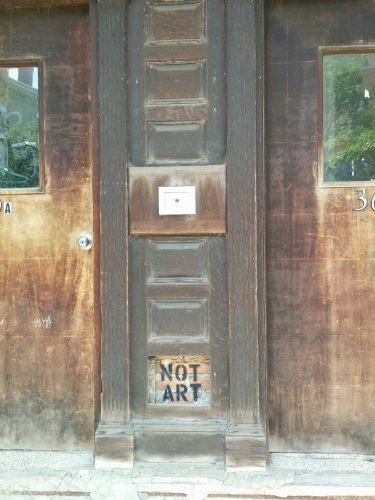Ideas are cheap. It is the physical actualization of a thought or a feeling that can be torturous, laborious and demanding but when ultimately achieved, and achieved successfully, that result, can be wondrous and mystical. As Mark Twain so aptly and pragmatically said, “The secret of getting ahead is getting started.”
We have to ‘breathe’ into our endeavors to reach that end. Traditionally, inspiration has mainly been seen as beyond our control and deriving from internal processes and yet I counter that inspiration will always be affected by external forces of culture, wealth or poverty, language, family, country and all the myriad parts that make us individuals. As much as all aspects of our lives are impinged upon by the politics, the history and the culture of the land we live in and the people we live with, so is our art, visual or otherwise, affected by these same influences. Art does not exist in a vacuum and art does not develop from nothing. We have travelled from the mindset of the Greeks who perceived inspiration as a symptom of madness, to inspiration being divine, to thoughts from the muses, to being a visionary as a gift of the Gods or God, to tapping into our unconscious mind, to the artist protesting society using art as a weapon, to something as simple as constructing a piece of art from the mundane and the ordinary around us. And as Georgia O’Keefe reminds us, “To create one’s own world takes courage.”
Despite theories that creativity is divine (in the religious sense), that only the wealthy have the time/energy/education to create and that creativity blossoms only under economic, political and spiritual freedom, great, truly great, works of art have been produced under the aegis of an established and constricting religion order. And great works of art have been produced in poor countries under horrendous conditions. And great works of art have been achieved in prisons both physical and mental. The consensus of any time period, is that inspiration is by its very essence, unruly. And therefore I say, without attributing any religious context or overtones to it, that inspiration is truly divine.
In this issue, we have the expressions, written and through their artwork, of several visual artists that have been previously showcased by Montreal Serai and whose diverse motivations and works reflect their unique inner discussion and their inner muse. This issue also includes Adele Shtern, a multi-disciplinary artist whose works, a combination of traditional and digital media, reveal the familiar and the mundane as the unusual; two poems by Dinh Le Doan, with The Concert Pianist seemingly sweet but with an acrid undercurrent; coverage, by James Oscar, of landmark discussions by critical art historians from India, Iran, and various West Asian countries this past March at the Armory Art Show Conference in New York and the effect, if any, on how we perceive art, and how we have perceived art; also by James Oscar, a particularly intriguing slant and review of the Frieze New York 2015 art fair, which hosts over 200 galleries from around the world, and his focus on specific artists and their work that “has become, especially within the context of global movements that have already set alight suppressed histories”; a heartfelt and wrenching prose/poem by Jaspreet Singh, about the Komagata Maru steamship in 1914 landing in Vancouver, BC, when 352 passengers were refused entry into Canada, under exclusions laws designed to keep out immigrants of Asian origin; John Fretz explores ‘things in everyday life’ in his ceramic sculptures that evoke a trembling intimacy.
And further we have Joyce Valbuena, who, in telling stories of struggles in Cordillera, show how the Filipino Indigenous People and their organization here in Quebec uses arts for activism. Perhaps the most telling line in Kayhan Irani’s essay about art and commercial success and her introspection around Diego Rivera’s art and life is her comment about or to herself – ‘But my shoes, I need a new pair’. Do enjoy the video of the voyage that the musical group Mosaïque, who come out of Chicoutimi, Quebec, undertook in Bengal, India this year and the transformation that occurred in each member in terms of their perception of India and presence of music in that society; independent photojournalist Tanya Bindra not only gives us glimpses into war-torn or destroyed areas by internal or external conflicts, with her photographs. but insight into those areas and her own relationship to the people in those countries; we have an intriguing dialogue with Norman Cornett illuminating surprising historical reasons about why African-Americans had introduced jazz in the 1920s to the French in Montparnasse; and not least, a conversation between Rosalind Hampton and Elena Stoodley, a jazz singer with sound art performances and a visual artist, about Stoodley’s thoughts on what it is to be, think or act like an artist and her approach to art and life.
All this and more, are how Montreal Serai’s contributors reveal personal and captivating glimpses in the shadowy territory of imagination and inspiration.
